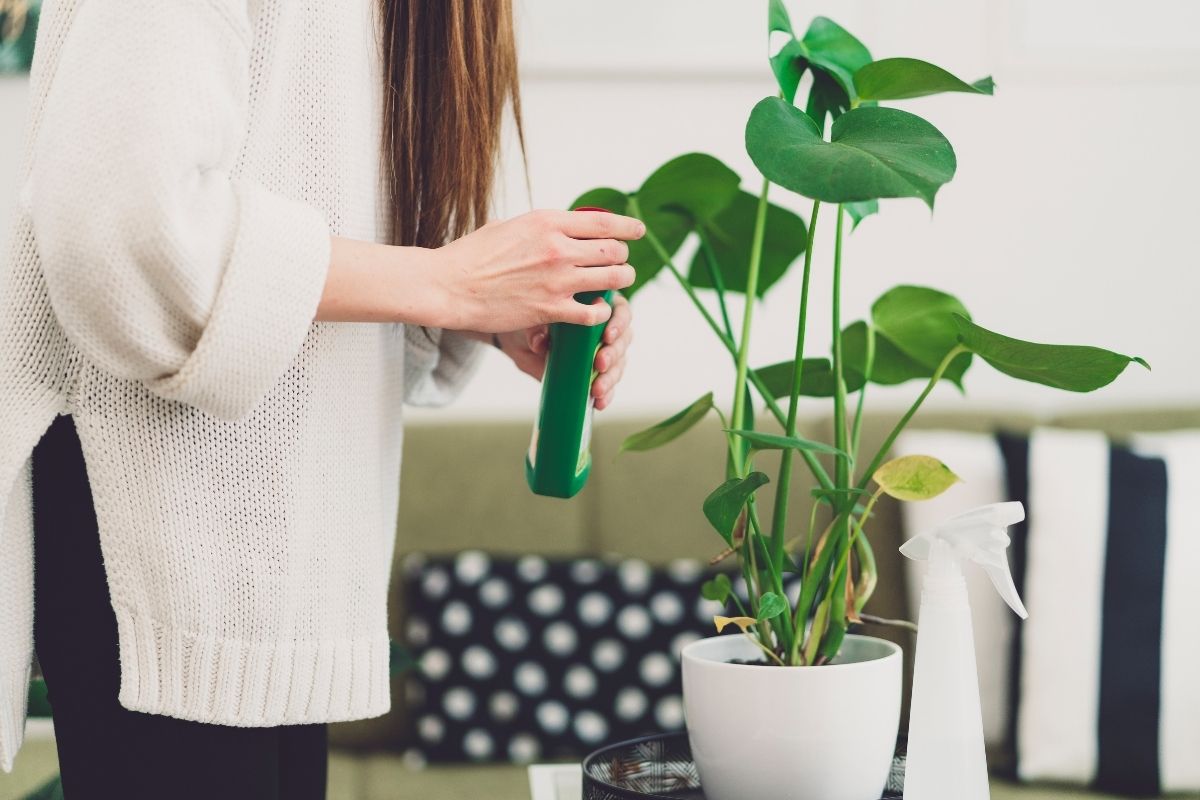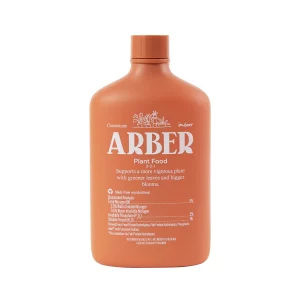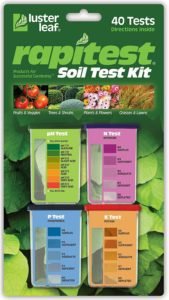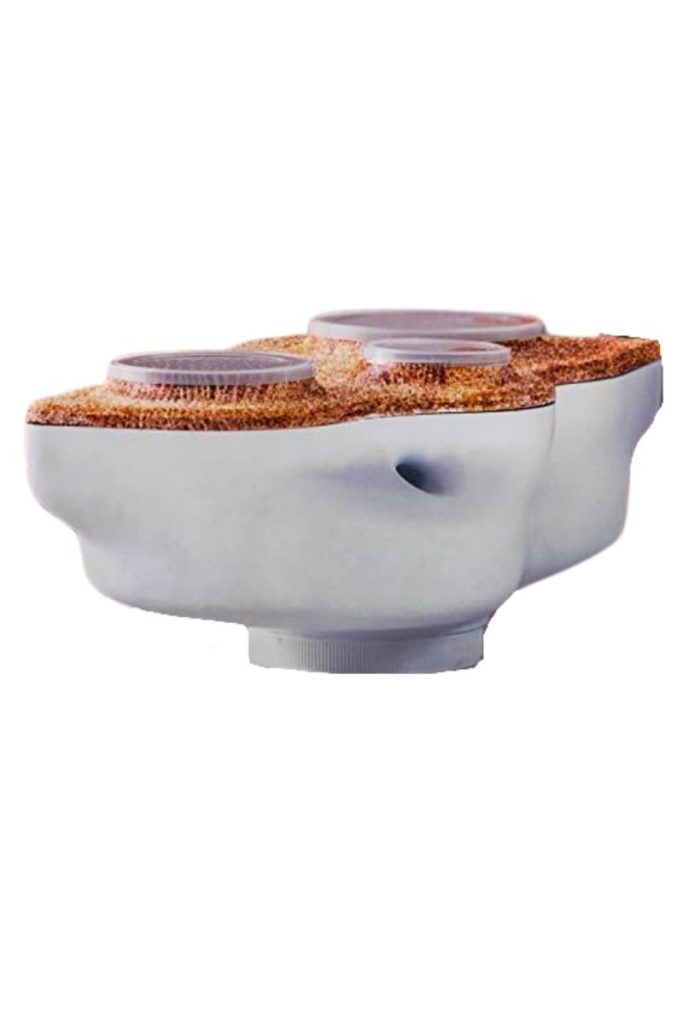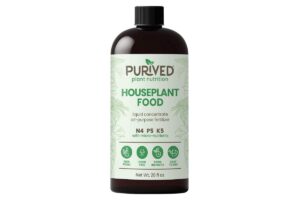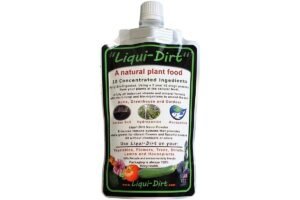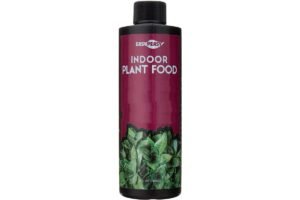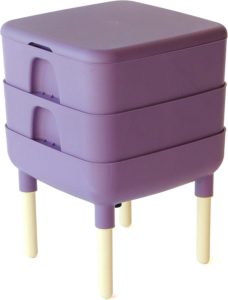When you weigh up your nutrient options, you’re likely going to come across resources mentioning both plant food and plant fertilizer. Which can lead to quite a few questions.
Like, are they the same? Do they provide adequate plant nutrients? And which one will provide my houseplants with everything they need?
To help you out, we’re going to explain the difference between plant food and fertilizer in great detail so that you can keep your indoor plants satiated, healthy, and looking better than ever.
Plant food vs. fertilizer: are they different?
When it comes down to it, plant food and plant fertilizer are made of essentially the same thing (basic plant nutrients). The key difference between the two is how concentrated the NPK values are.
Confused? Don’t worry, I’ll explain what I mean.
Plant food
Although the phrase “plant food” is often used interchangeably for plant fertilizer, when a gardener uses the phrase plant food, they often aren’t referring to a plant fertilizer.
They’re referring to their plant’s multivitamin. Just like a multivitamin has all of the nutrients we need to survive (whether or not we are deficient), plant food contains all the components a plant needs to survive. Like water, energy, nutrients, and air.
It’s a mixture of all the components that a plant needs to derive from its environment to produce adequate amounts of sustenance.
Think of it this way: when a plant absorbs nutrients, it uses these nutrients in combination with water, sunlight, and carbon dioxide to make “food.”
In ideal growing conditions, plants have an abundance of all of these components. In an indoor setting where we grow indoor plants in containers, the most commonly limited component – nutrients – is finite.
This is why a regular multivitamin (like plant food) comes in handy. It consistently replenishes the soil with all of the nutrients needed for survival.
I’ll mention this again later in the post… I really like Arber plant food. It’s all natural, gentle, and environmentally friendly both in its ingredient list and manufacturing process.
Even so, as the plant pulls what it needs from the soil, the soil will eventually become imbalanced and leave the plant without the macro-and micronutrients it requires for its survival.
This is where plant fertilizer products come in.
Plant fertilizer
Plant fertilizer is like a targeted medicine for a plant that provides it with its exact nutrient needs in any given moment. Whether it needs an extra dose of nitrogen or a little bit more potassium, plant fertilizer can provide it with the exact nutrient ratio it needs to restore balance.
In the natural world, healthy plants receive these nutrients in periodic spurts, whether it be from nitrogen-filled rain, phosphorus-rich organic matter, or a soil’s mineral-rich parent material. Natural settings are constantly being nutritionally replenished.
LEARN MORE: How Much Fertilizer to Use Per Plant
However, this isn’t the case for indoor environments.
And depending on the plants that you’re growing in your indoor garden, plant fertilizers are developed with certain constituents and in various NPK combinations to suit a specific plant’s unique growing requirements. For example, orchids grow best when fed a relatively strong and well-balanced orchid fertilizer, while cacti and succulents enjoy the subtler blends that have been specifically designed for their unique tastes.
There are several fertilizers available. You’ll often be able to find natural fertilizer, like organic fertilizers, as well as synthetic fertilizer, like those used on commercial agricultural crops.
When you think about this from an ecological perspective, orchids, having evolved in the nutrient-rich environments of the world’s jungles, love nothing more than a fertilizer that offers them a nutrient-rich diet.
In contrast, most succulents and cacti have evolved to suit ecological niches that are often depleted of nutrients. Sandy and nutrient sapped soils make up their natural environment. So it only makes sense that they enjoy subtle blends that offer them the moderate amount of nutrients they have become accustomed to throughout their evolutionary history.
LEARN MORE: fertilizing 101 – how to fertilize your indoor plants
What do plants need to survive and grow?
Plants need sunlight, air, nutrients, and water to survive. In combination, these components are what we refer to as plant food. Read our breakdown on plant nutrients to understand exactly which nutrients are needed and in what quantities. Otherwise, I’ll go over the basics here.
Let’s look at how different plants receive food from these components.
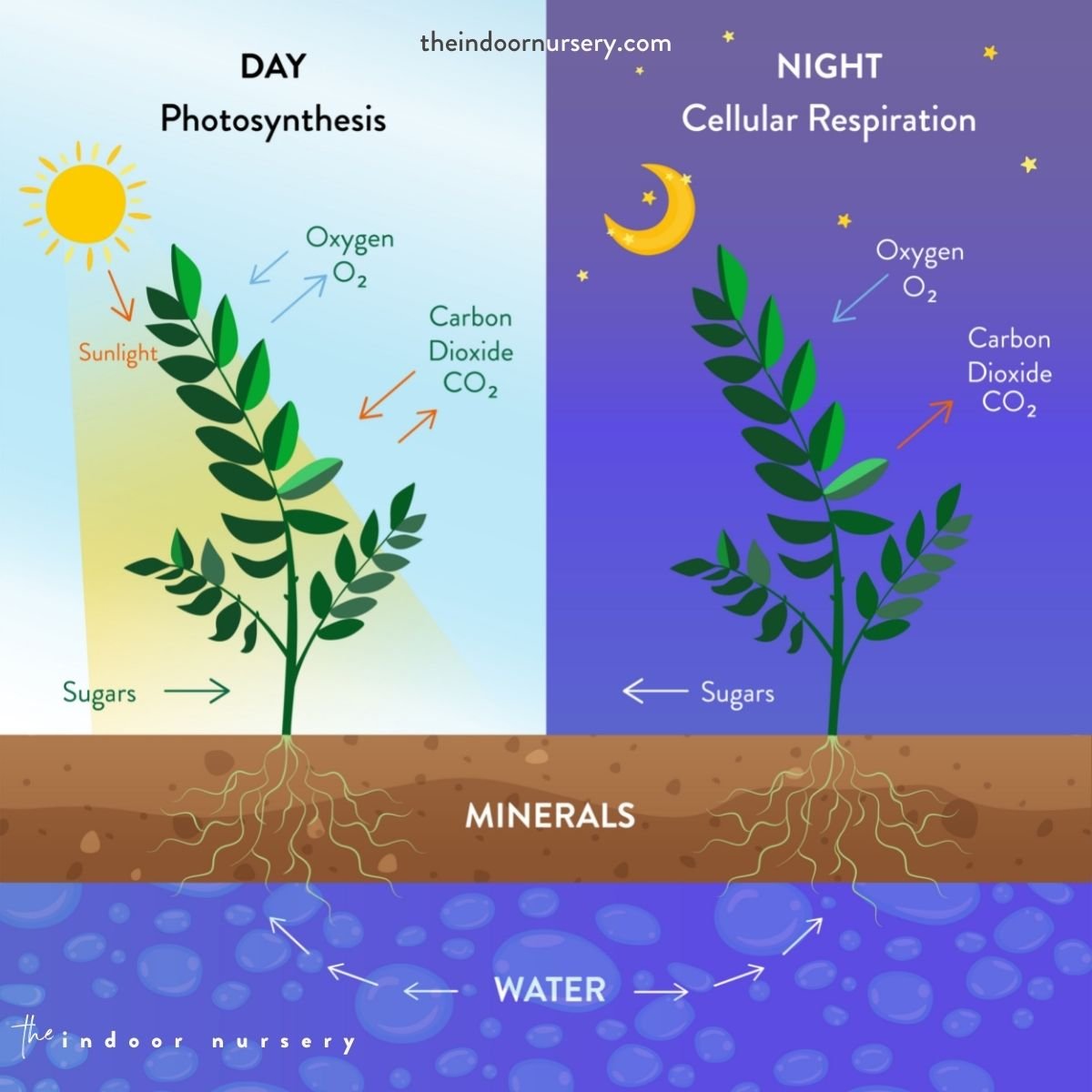
Sunlight
Plants don’t receive nutrition via sunlight, rather energy that helps them process it. Chlorophyll, located within a plant’s leaves, exists as various types of molecules that capture light to create energy. This energy is used to convert carbon dioxide, water, and minerals into oxygen and energy-rich organic compounds.
One of these organic compounds is glucose, which is used for cellular respiration. The process of cellular respiration, also known as glycolysis, is the breakdown of glucose to form ATP and pyruvic acid. Basically, ATP, amongst other metabolic processes, is used to transport and process nutrients. While pyruvic acid supplies energy to plant cells.
Air
Just like us, plants respire. But instead of lungs, plants use tiny pores, predominantly found on the underside of their leaves, called stomata. Through stomata, plants absorb and expel carbon dioxide and oxygen – both needed for plant growth, and cellular respiration.
Growing medium
Whether it be soil, water, or air, it is within this growing medium that all the nutrients plants need is stored. The plant absorbs them slowly thanks to small hairs that line their roots, commonly referred to as feeder roots.
Water
Water is the method of travel for plant nutrients. As a plant absorbs water, it also absorbs the nutrients that exist within the growing medium, as well as the nutrients contained within the water itself.
Water is also used for turgidity (the rigidity of a plant cell). Without adequate access to water, plants become droopy and wilted, making it impossible for them to transport nutrients throughout their vascular tissue.
Which is better for indoor plants – plant food or fertilizer?
Well, it depends on your specific plant’s needs and the current state of your soil.
If your indoor plants are healthy and already receiving enough nutrients from the soil, then plant food may be the way to go. It can help keep the soil balanced and ensure that your plants are getting all the nutrients they need.
However, if your indoor plants are showing signs of nutrient deficiency or the soil is lacking in certain nutrients, then fertilizer may be the better option. It can provide your plants with the exact nutrients they need to restore balance and promote healthy growth.
I personally prefer plant food because it’s a lot gentler and can help prevent major loss of nutrients to begin with. It also doesn’t burn plants quite as badly as inorganic fertilizers do. Go ahead and give your soil a test now to see where your plants stand in terms of nutritional deficiencies.
Ultimately, the best choice for your indoor plants will depend on your plant’s individual needs and your own personal preferences. Some gardeners like to use both plant food and fertilizer in combination to provide their plants with a well-rounded nutrient profile.
So go ahead, experiment a little and see what works best for you and your plants.
What to look for when choosing plant food
Different plants have different nutrient requirements. For instance, a fern may need a high-nitrogen fertilizer while a cactus may require a low-nitrogen fertilizer. Check the specific nutrient requirements of your plant before purchasing any plant food.
The growing medium also affects the choice of plant food. For example, if your indoor plants are growing in a soilless medium like hydroponics, then you may need to choose a plant food that is specifically formulated for hydroponic systems.
You’ll also need to choose between organic and synthetic plant food. Organic plant foods are derived from natural sources and are slow-release, which means they release nutrients over a longer period of time. Synthetic plant foods are chemically produced and offer immediate nutrients to plants.
I really like this all natural organic plant food by Arber.
No matter what you end up going with, be sure to read the label on the plant food to understand the NPK ratio, which stands for Nitrogen, Phosphorus, and Potassium. This ratio indicates the relative proportions of these essential nutrients in the plant food. The ratio you choose will depend on the needs of your specific plant.
With these tips in mind, you’ll be well on your way to choosing the perfect plant food for your indoor garden.
What to look for when choosing plant fertilizer
When you’re looking for a plant fertilizer or food, you’ll want to consider a few key factors, like:
Organic fertilizer or synthetic fertilizer
When you’re picking a fertilizer, determine whether you want to use something naturally occurring, or something that has been chemically produced.
Organic fertilizer advantages and disadvantages
Organic fertilizers are great for the long haul as they release nutrients slowly. The advantage to this is that over-fertilizing and fertilizer burn is less likely. Chemically produced fertilizers when used incorrectly, are notorious for causing these issues.
Organic fertilizers are also great for building up the robustness of your soil’s nutrients over time as they promote water and nutrient retention, support beneficial soil-borne microbes, and have the bonus of being more sustainable and environmentally friendly compared to their chemical fertilizer counterparts.
Aside from these benefits, there are a couple of drawbacks to organic fertilizers as well. As organic fertilizers release nutrients slowly over time, if a new or nutrient-deprived potting soil is being used, or a plant has been neglected, an organic fertilizer may not release life-sustaining nutrients when a plant needs it most – like during the growing season.
Organic fertilizers are less reliable, as not all organic fertilizers are created equally. This can produce inconsistent results.
DIY compost is a good example of this.
Getting your home compost right can be a complicated procedure, use it too early and you risk it being too green – potentially causing high levels or nitrogen and phosphorus building up in your soil. Something that is harmful to plants. Add too much brown – carbon – in your compost and your plants won’t have access to enough nitrogen or phosphorus.
Chemical or synthetic fertilizers advantages and disadvantages
Chemical fertilizers are predominantly soluble, meaning they easily dissolve or dissociate in water – making them readily available to plants. So rather than existing within natural compounds, like organic fertilizers do, they’ve been produced in a synthesized form.
This is a significant advantage over organic fertilizers.
For example, chemical fertilizers don’t require soil microbes to break them down into simpler molecules – like organic fertilizers. Rather, they provide plants with immediate access to the macro-and micronutrients they need most shortly after the fertilizer has been applied.
But of course, this isn’t without its own set of disadvantages.
Because chemical fertilizers are inherently soluble, and love nothing more than to chemically bond with water molecules, they are at risk of being washed away easily. This is apparent in easily leached soil like sandy or free-draining potting mixes.
PRO TIP: Before you apply chemical fertilizers, it’s best to water your plant, apply the fertilizer, and give your indoor plant a good couple of days to do its thing. Then water in small amounts with a water mister or watering can – one with a fine filtered spout attachment. Water just enough to dampen the topsoil – about an inch deep – but not enough to flush the whole pot. Otherwise, you’ll be literally washing your investment down the drain.
Fertilizer forms
Another important factor to consider is how fertilizer is delivered to your indoor plants. For example, you’ll find on the market a few different options. Liquid fertilizers, granular fertilizers, and powdered fertilizers amongst the most common.
- Liquid fertilizers are added to an established plant’s growing medium.
- Powdered and granular fertilizers are most commonly mixed with potting soil when planting out seedlings or while repotting.
Using the right fertilizer for the job
For most houseplants, a balanced fertilizer is going to be the option that provides your plant with all the nutrients that they need for good health and growth. While most fertilizers have an abundance of the big three macronutrients, your plants may need specific micronutrients that not all fertilizers will provide.
Look at the packaging to make sure that you’re buying the optimal fertilizer for your plants, depending on its specific nutrient requirements. Also be aware that there is also a difference between fertilizer needs when using leca versus planting in soil.
Rate of release
We touched on this briefly, but it is important to consider further. Do you need to feed your plants immediately? If they’ve been lacking the nutrients that they need for too long a period, they may need to be given nutrients as soon as possible. However, if your plants are healthy, then use slow-release fertilizers instead. That way, they’ll continue to get the nutrients without the risk of any over fertilization complications.
The goal should be to improve plant health over an extended period, so a combination of both is a fertilization strategy you may wish to employ.
Using at home solutions
Often, there are several sources of essential nutrients that can be produced in your own home. If you’re interested in making plant food yourself, begin with your own food.
That’s right, indoor composting your own foods is the easiest home solution for feeding your plants. Like:
- Bokashi. Bokashi is an anaerobic fermentation process which is good for almost all household plants. With the use of specific bacteria that decompose household scraps and subsequently breaking down their complex organic materials, the bokashi helps in conditioning the soil of the plants and makes it fertile for better growth. You can get a Bokashi starter system here.
- Worm farm. A worm farm is basically a composting system that uses the help of worms to convert food scraps into high-nitrogen organic matter. The organic matter is called “castings” or “vermicompost”, and it is a great addition to compost or potting mixes. Worm farms also produce “worm juice”, a natural liquid fertilizer that can be diluted and applied to potting soil. The organic fertilizers produced by warm farms are rich in organic matter and will bring health and strength to your plants, while allowing you to recycle your kitchen scraps.
- Compost. Compost is rich in nutrients and helps in improving the quality of potting soil. It is also an excellent source of nitrogen, phosphorus, and potassium. Compost also contains beneficial fungi and other soil borne microbes that work to improve the health of plant roots and subsequently promote healthy growth. Compost also improves soil structure and allows for better air and water circulation.
READ MORE: what to do with extra scoby (hint: it’s good for the soil)
So, is plant food and fertilizer the same thing?
Plant food and plant fertilizer are both important for the health and growth of indoor plants, but they serve different purposes. Plant food provides all the components that a plant needs to survive, while plant fertilizer provides targeted nutrients to restore nutrient balance.
A gentle plant food is great for houseplants that are generally stable and healthy.
Fertilizers provide immediate access to macro-and micronutrients, but they can cause over-fertilizing or fertilizer burn if used incorrectly. BUT organic fertilizers are a great option for the long haul, as they release nutrients slowly, promote water and nutrient retention, support beneficial soil-borne microbes, and are more sustainable and environmentally friendly compared to chemical fertilizers. Home solutions like bokashi, worm farms, and compost can provide an excellent source of essential nutrients for indoor plants.
Just don’t go overboard.
Understanding the difference between plant food and fertilizer, and being mindful of the type and amount of nutrients your indoor plants require, can help you grow healthy, happy plants that thrive in your indoor garden.
More about fertilizing
- 10 Best Worm Composter Bins For Easy Homemade Compost
- Compost Starter 101: When You Need It And How To Make It
- Our top pothos fertilizer picks for luscious vines
- 5 reasons to use coffee as fertilizer for your plants
- Best fertilizer for Monstera plants for gorgeous leaves
- Fertilizer Burn on Plants? Here’s How to Fix it
- Fiddle leaf fig fertilizer: How to feed your fiddle leaf
- Tags:
- Fertilizing
- houseplant care

